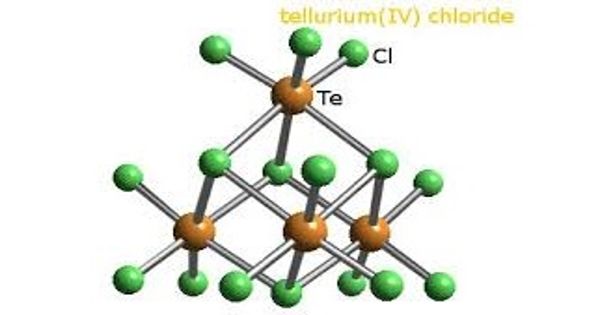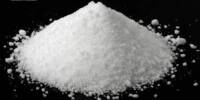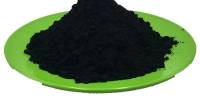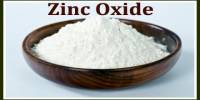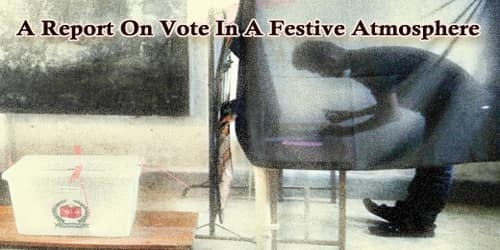Tellurium tetrachloride is a number of binary compounds of tellurium and chlorine, especially the tetrachloride (TeCl₄), a volatile pale yellow solid. It is the inorganic compound with the empirical formula TeCl4. The compound is volatile, subliming at 200°C at 0.1 mmHg. Molten TeCl4 is ionic, dissociating into TeCl3+ and Te2Cl102-.
Properties
It melts easily to a red liquid. It evaporates easily. It reacts with water to make tellurium dioxide and hydrochloric acid. It is toxic and corrosive.
- Compound Formula: Cl4Te
- Molecular Weight: 269.412
- Appearance: Black Solid
- Melting Point: 224°C (435°F)
- Boiling Point: 380°C (716°F)
- Density: 3.26 g/cm3
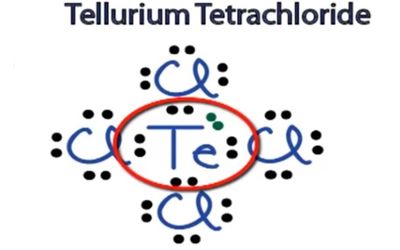
Structure
It is a chemical compound. It contains tellurium in its +4 oxidation state. It also contains chloride ions. TeCl4 is monomeric in the gas phase, with a structure similar to that of SF4. In the solid-state, it is a tetrameric cubane-type cluster, consisting of a Te4Cl4 core and three-terminal chloride ligands for each Te. It is made by reacting tellurium powder and chlorine.
Alternatively, this tetrameric structure can be considered as a Te4 tetrahedron with face-capping chlorines and three-terminal chlorines per tellurium atom, giving each tellurium atom a distorted octahedral environment
Synthesis
TeCl4 is prepared by chlorination of tellurium powder:
Te + 2 Cl2 → TeCl4
The reaction is initiated with heat. The product is isolated by distillation.
Applications
TeCl4 is used in making organic compounds. It is of occasional interest in organic synthesis. It is used in organic synthesis to prepare Cl-C-C-TeCl3 derivatives by reacting with alkenes and aryl tellurium compounds by reacting with electron-rich arenes. It adds to alkenes to give Cl-C-C-TeCl3 derivatives, wherein the Te can be subsequently removed with sodium sulfide. Electron-rich arenes react to give aryl Te compounds. It is involved in the preparation of diaryl telluride from anisole. Thus, anisole gives TeCl2(C6H4OMe)2, which can be reduced to the diaryl telluride.
Safety considerations
As is the case for other tellurium compounds, TeCl4 is toxic. It also releases HCl upon hydrolysis.
Information Source:
